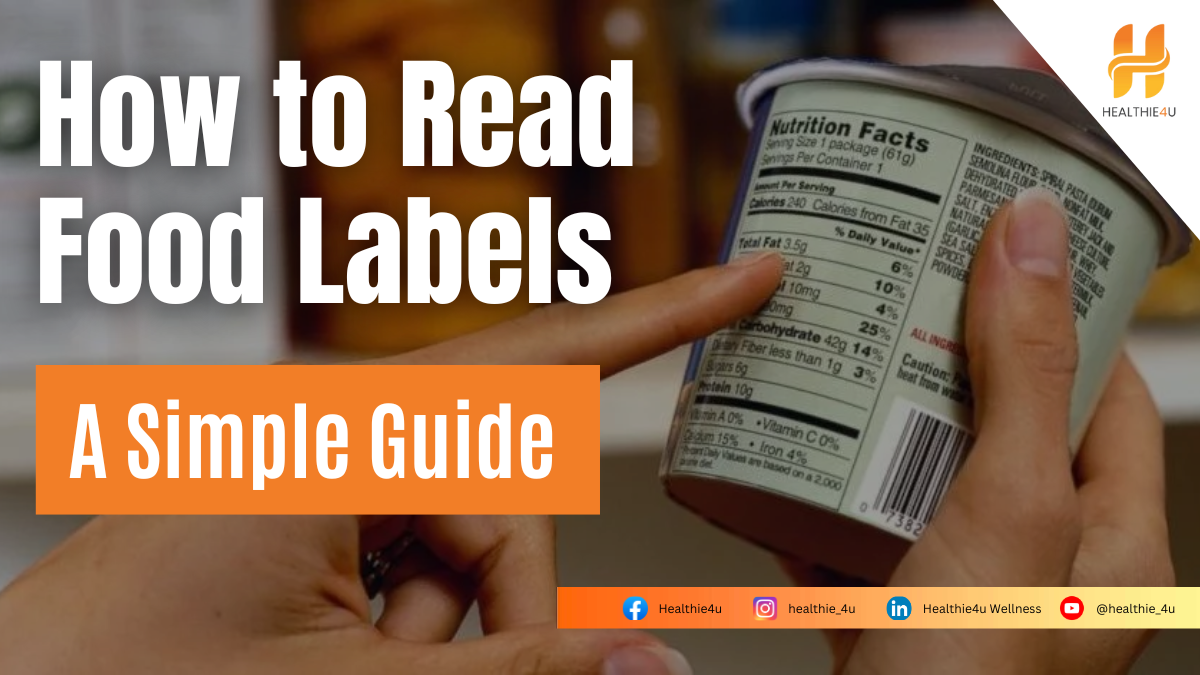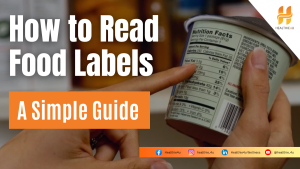
Understanding food labels is essential for making healthier choices and managing your diet effectively, especially in India, where packaged foods must adhere to regulations set by the Food Safety and Standards Authority of India (FSSAI). This ensures consumers have access to vital nutritional information. Here’s a detailed breakdown of key aspects of food labels that can help you navigate your food choices.
1. Nutrition Facts Panel
The Nutrition Facts panel provides essential details about the nutrients in a food product. Key components include:
- Serving Size: This indicates the amount considered as one serving. All nutritional information is based on this quantity, making it crucial to consider if you consume more than one serving.
- Calories: This shows the energy provided by one serving. Monitoring your calorie intake can assist in weight management.
- Nutrient Percentages (% Daily Value or %DV): This section lists various nutrients, showing how much each serving contributes to your daily needs. For instance, 5% DV or less indicates a low nutrient content, while 20% DV or more signifies high nutrient levels.
2. Identifying Ingredients
Reading the ingredient list is vital for understanding what’s in your food:
- Order Matters: Ingredients are listed from most to least abundant. The first few ingredients are the main components of the product.
- Look for Whole Foods: Aim for familiar ingredients like fruits, vegetables, and whole grains, which are healthier options.
- Check for Allergens: Common allergens, including peanuts, tree nuts, dairy, eggs, soy, wheat, fish, and shellfish, should be clearly labeled.
3. Recognizing Additives and Preservatives
Understanding additives and preservatives can help you make better choices:
- Additives: These enhance flavor and texture (e.g., sugar, salt, artificial colors).
- Preservatives: These extend shelf life (e.g., sodium benzoate, BHA/BHT).
4. Interpreting Health Claims
Food packaging often features various health claims, but not all are reliable:
- Misleading Labels:
- All Natural: This term isn’t strictly defined, so products may still contain preservatives.
- Multigrain: This indicates multiple grains are included but may not be whole grains; look for “whole grain” for better nutrition.
- No Sugar Added: These products may still have natural sugars, which can contribute to overall calorie intake.
- Zero Trans Fat: A product can claim to have zero trans fats but may still contain small amounts; check the ingredient list for hydrogenated oils.
5. Spotting Hidden Sugars and Fats
Many foods contain hidden sugars and unhealthy fats:
- Common Sugar Names: Be wary of high fructose corn syrup, sucrose, glucose, and honey, often found in sauces and snacks.
- Unhealthy Fats: These often come from partially hydrogenated oils used in processed foods.
6. Reading Allergen Information
Allergen labeling is crucial for identifying potential allergens:
- Identifies Common Allergens: Helps you spot ingredients like peanuts, dairy, and soy.
- “May Contain” Statements: These indicate potential contact with allergens during production, which is vital for those with severe allergies.
7. Choosing Whole Foods vs. Processed Foods
Opting for whole foods over processed foods can greatly benefit your health:
- Benefits of Whole Foods: These foods are nutrient-rich, typically contain little to no added sugars and unhealthy fats, and are generally better for health.
- How to Spot Highly Processed Products: Long ingredient lists with many unfamiliar items usually indicate processed foods. Watch out for added sugars, unhealthy fats, and preservatives.
8. Understanding Macronutrients
Macronutrients are essential nutrients your body needs in large amounts: carbohydrates, proteins, and fats.
- Carbohydrates: Found in foods like bread, rice, and fruits, these provide the body’s main source of energy.
- Proteins: Important for building and repairing tissues, they come from sources like meat, dairy, beans, and nuts.
- Fats: Necessary for hormone production and vitamin absorption, healthy fats can be found in avocados, olive oil, and nuts.
9. Evaluating Portion Sizes
Understanding portion sizes is key to managing your diet and calorie intake. Many people eat more than they realize, leading to weight gain. Measuring portions with cups or a scale can help you make healthier choices.
10. Navigating Special Diets
If you have specific dietary needs, such as gluten-free, vegan, or keto, reading labels is crucial. Look for clear labels or certifications to ensure the products meet your dietary requirements. This knowledge helps you stay on track with your health goals.
In a world full of food choices, knowing how to read labels empowers you to make informed decisions about your nutrition. This understanding fosters a more mindful approach to eating, ensuring you select foods that truly nourish your body.

